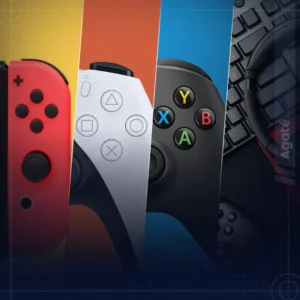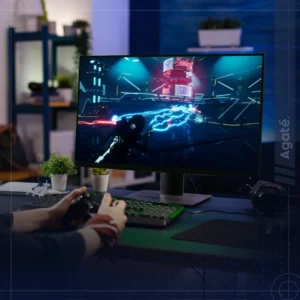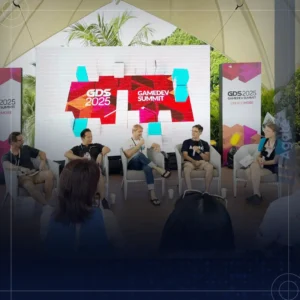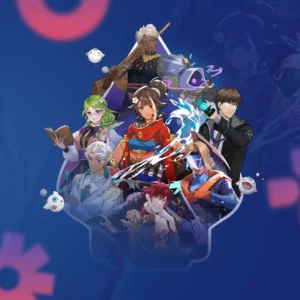Animation is a crucial element of video games, as it creates the illusion of movement and life for the characters, environments, and actions. When you play a video game, the way you see your characters can vary depending on the type of animation used. But what are the different types of animation and how do they influence the gaming experience? We will explore just that! Let’s dive into the differences between 2D and 3D animation and how they affect the visual style, gameplay, and immersion of video games.
What is 2D Animation?
By definition, 2D animation is a technique that creates the illusion of movement by displaying a series of flat images in rapid succession. Each image represents a frame, and each frame shows a slight change in the position or appearance of the objects. 2D animation can be done by hand drawing, using computer software, or a combination of both.
In 2D games, you can see that they use only two dimensions of space: horizontal and vertical or, in other terms; two axes of motion. These games have a “flat” appearance, where you can only move left and right or up and down. They tend to be simpler than 3D games in terms of gameplay and graphics. Many 2D games have a linear structure, where your main goal is to reach the end of each level.
Also, the controls in 2D games are usually easier to master. Because your character has a limited range of motion, as they have fewer actions and interactions with the environment. Another feature of 2D games is that they use sprites, which are small images that represent characters, objects, or backgrounds. Sprites have fixed positions on the screen, and they don’t change their appearance when you change your perspective. Unlike 3D games, where you can view the scene from different angles, 2D games have a fixed viewpoint.
2D animation is often used for games that have a stylized or cartoonish aesthetic, such as platformers, puzzle games, or casual games. 2D animation allows for more artistic freedom and expression, as the developers can create any style or genre they want.
What is 3D Animation?
If you see a more depth dimension in a particular video game you play, that means you’re seeing or in this case, playing a game with 3D animation. By definition itself, 3D animation is a technique that creates the illusion of movement by manipulating three-dimensional models in a virtual space. In it, each model has a skeleton, a mesh, and a texture, or in other terms called armature, which define its shape, structure, and appearance. 3D animation can be done by using computer software or motion capture technology.

3D Character from Agate’s Valthirian Arc
As you can see, a 3D character is made up of two components: bones/skeletons and mesh. Bones/skeletons are the internal structure that defines how the character can move. Mesh is the external shape that gives the character its appearance. The mesh is attached to the bones, so when a bone moves, the corresponding part of the mesh moves with it.
3D animation is often used for games that have a realistic or cinematic aesthetic, such as shooters, racing games, or role-playing games. An example of 3D animation is Agate’s racing game Stellarace;
rom the video above, you can see that 3D animation creates a more realistic and immersive experience, as developers can design detailed environments and characters. For games such as racing or shooting, 3D animation often uses a third-person perspective, where the player can see their character from behind. However, 3D animation games don’t always use a fixed third-person perspective to show the player’s character. Sometimes, the camera angle can change depending on the direction of the gameplay or the player’s input. Some games allow the player to switch between different views, such as first-person, third-person, or top-down.
One of the main differences between 2D and 3D animation is the level of realism and immersion they can achieve. 3D animation can create more detailed and dynamic scenes, as it adds depth and perspective to the objects and characters. It can also make the games more interactive and engaging, as it allows the players to explore the environment from different angles and perspectives. However, 3D animation also comes with some drawbacks, such as the higher cost and time required to produce it.
How Do They Influence Gameplay?
The choice between 2D and 3D animation can have a significant impact on the gameplay. Depending on the genre, theme, tone, and audience of the game, one type of animation may be more suitable than the other. For instance, while 3D characters in video games are more dynamic and effectively represent movement, 2D animation is still regarded as the more conventional approach. The characters generate emotions and engagement in the story. Here are some examples of how they influence gameplay:
- In platformers, 2D animation can create a sense of nostalgia and simplicity as it recalls the classic games of the past. On the other hand, 3D animation can create a sense of innovation and complexity, as it allows for more exploration and interaction with the environment.
- In puzzle games, 2D animation can create a sense of logic and clarity as it presents the puzzles in a straightforward manner. 3D animation can create a sense of mystery and confusion, as it introduces more depth and perspective to the puzzles.
- In racing games, 2D animation can create a sense of speed and excitement as it emphasizes horizontal movement. In contrast, 3D animation can create a sense of realism and immersion as it simulates the actual physics of the vehicles and the environment that surrounds it.
- In role-playing games, 2D animation can create a sense of fantasy and imagination, as it relies on stylized graphics and artistic expression. While 3D animation can create a sense of realism and immersion as it reproduces the details and textures of the game world.
Therefore, choosing between 2D and 3D animation is not a trivial matter for game developers. It can affect how the players perceive and enjoy the game, as well as how the game communicates its message and theme.







